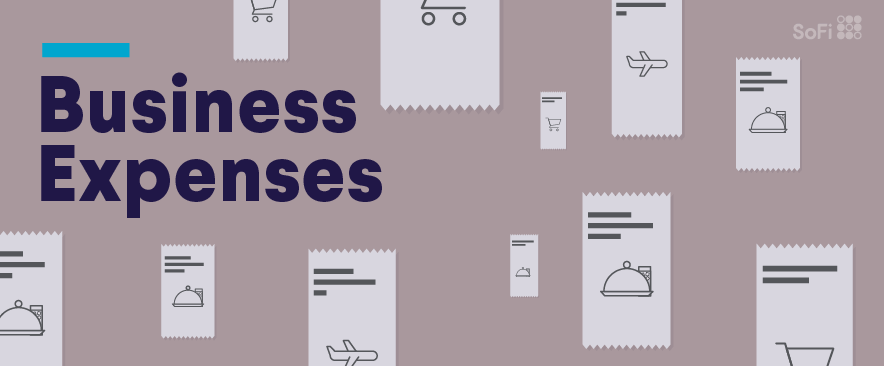Life Goals You Can Work on After Refinancing Your Student Loans
If you’re considering refinancing some or all of your student loans, you may wonder what comes next on your financial to-do list.
On June 3, President Biden signed the debt ceiling bill into law, ending the three-year federal student payment pause. Payments are expected to resume in October.
Refinancing student loans can often result in a lower monthly student debt payment, either due to a lower interest rate, a longer loan term, or both. A lower monthly payment can be a big relief to borrowers who are still reeling financially from the effects of Covid-19 and higher inflation.
Lower payments can also free up some of your income for other key financial goals. That’s what we’ll look at here.
What Happens When You Refi Student Loans?
Understanding what happens after a refinance is key to planning your next steps.
As mentioned above, when you refinance, you may find a more favorable interest rate or more flexible loan terms that will help reduce your monthly payment. The SoFi Student Loan Refinancing Calculator can help determine how much refinancing could save you.
Keep in mind, when you refinance a federal student loan into a private loan, you lose the benefits and protections that come with a federal loan, like deferment and public service-based loan forgiveness (PSLF).
What Is Your Next Financial Goal?
As you consider refinancing, it’s a good idea to keep your other financial goals in mind. How can refinancing student debt — and perhaps lowering the percentage of income dedicated to repayment — help you achieve those goals? Take a look at the following scenarios that might apply to you.
1. Pay Down High Interest Debt
Once your student loan debt is under control, turn your attention to any high-interest debt you may be carrying on credit cards. There are two common ways people approach paying down debt. Which one you choose depends on your financial situation.
• The Debt Avalanche. With this system, you start by paying your highest interest rate card first, with payments above the monthly minimum. You do this while still keeping up with minimum payments on any other debt. When you eliminate your highest rate debt first, you can more quickly lower your overall debt picture.
• The Debt Snowball. In this scenario, you pay off your debt in order of the smallest to the largest balances, regardless of interest rate. This way you see some of your smallest debts paid off quickly and get a psychological boost from doing so. As you pay off each debt, you assign the amount of the payment you were making on that balance to the next debt. Your debt repayment builds momentum, known as “the snowball effect.”
Recommended: Which Debt to Pay Off First: Student Loan or Credit Card?
2. Start an Emergency Fund
Having money saved for unexpected expenses is a vital part of financial wellness.
But saving for emergencies is a challenge for many Americans. According to Bankrate’s 2023 annual emergency fund report, less than half (43%) of U.S. adults could pay for an unexpected emergency expense from their savings.
Starting or boosting your emergency fund with money saved on student loan payments is a great way to help keep your budget intact and stay out of debt.
How much should you save in your emergency fund? At least three to six months of living expenses (or take-home pay) is the rule of thumb. That way, if you lose your job, have an accident, or get sick, you’re likely to have enough to see you through until your situation improves.
3. Increase Retirement Contributions
Are you putting as much as you can away for retirement? Starting early can pay off big down the line, thanks to the magic of compound interest — and the fact that earnings grow tax-free in most retirement accounts such as IRAs and 401(k)s.
If your employer offers a matching contribution benefit, upping your game may be even more important. This is free money. Whenever possible, contribute the amount necessary to qualify for the full match so you take the best advantage of this key benefit.
4. Save for the Next Stage of Life
Life goes on well after student loans. Now with less student debt burden, you’re probably looking at what’s next. That may mean buying a car, saving for a down payment on a home, starting a family, or expanding a business.
Careful budgeting means you can put the difference between your old student loan payment and your new one toward other important life goals.
Once you establish the goal you’re saving for, consider opening a high-yield savings account dedicated to that purpose. You’ll earn interest while your nest egg accumulates but still have liquidity so your money is available when you’re ready to pursue your goal.
5. Invest
Starting an investment account outside of retirement savings can be an important financial goal in and of itself. The reason? Long-term stock market returns consistently outperform many other types of investments. Over the past decade through March 2022, the average annual return for the Standard & Poor’s 500 Stock Index was 14.5%.
Returns vary, of course, depending on the years you are invested and the economic environment. But over the long haul, investing in stocks early — even small amounts — can pay off in the future.
Mutual funds and exchange traded funds (ETFs) are two easy ways to start investing. A mutual fund is a collective investment which pools funds from many investors to invest in stocks, bonds or other securities. ETFs work much the same way but unlike mutual funds, ETFs can be bought and sold like a stock as the price goes up or down during the day.
How to Pay Off Student Loans Ahead of Schedule
As we’ve seen, a refinance can help lower your monthly payments and perhaps bring some much-needed wiggle room to the rest of your finances.
That may motivate you to keep the momentum going and look at ways you can repay your remaining student debt faster. Here are two tried and true strategies.
Pay More Than the Monthly Amount
Your monthly payment amount isn’t set in stone. You can always pay more than the minimum amount, and in most cases you probably should. Payments over the minimum monthly amount owed are applied directly to the principal. So even a little bit extra can lower the amount of your loan and help you save on interest over the life of the loan.
Recommended: Why Making Minimum Student Loan Payments Isn’t Enough
Dedicate a Windfall to Student Loans
Another strategy for paying student debt faster: Whenever you get a windfall, use some or all of it to make a lump sum payment toward your student loan principal. Think tax refunds, cash gifts, work bonuses, or income from a side gig or inheritance.
What to Avoid After Refinancing Student Loans
After refinancing student loans, be careful not to fall into a common trap: It’s called “lifestyle creep,” and it happens when you spend all of your discretionary income instead of directing some of it to financial goals.
To avoid creep, mindfully adjust your budget to account for any increase in income — such as lower student loan payments. That way the money will be put to good use instead of being frittered away.
Recommended: Living Below Your Means: Tips and Benefits
The Takeaway
Refinancing your student loans may help you lower your monthly payments, freeing up funds to put toward other financial goals. You might choose to pay down high-interest credit card debt, boost your emergency fund or retirement account, or even pay off your student loans faster. With the end of the federal student loan payment pause in sight, now may be a good time to consider refinancing all or part of your student debt.
Looking to lower your monthly student loan payment? Refinancing may be one way to do it — by extending your loan term, getting a lower interest rate than what you currently have, or both. (Please note that refinancing federal loans makes them ineligible for federal forgiveness and protections. Also, lengthening your loan term may mean paying more in interest over the life of the loan.) SoFi student loan refinancing offers flexible terms that fit your budget.
Photo credit: iStock/RossHelen
SoFi Student Loan Refinance
If you are a federal student loan borrower, you should consider all of your repayment opportunities including the opportunity to refinance your student loan debt at a lower APR or to extend your term to achieve a lower monthly payment. Please note that once you refinance federal student loans you will no longer be eligible for current or future flexible payment options available to federal loan borrowers, including but not limited to income-based repayment plans or extended repayment plans.
SoFi Loan Products
SoFi loans are originated by SoFi Bank, N.A., NMLS #696891 (Member FDIC). For additional product-specific legal and licensing information, see SoFi.com/legal. Equal Housing Lender.
Financial Tips & Strategies: The tips provided on this website are of a general nature and do not take into account your specific objectives, financial situation, and needs. You should always consider their appropriateness given your own circumstances.
SOSL0623001 Read more









